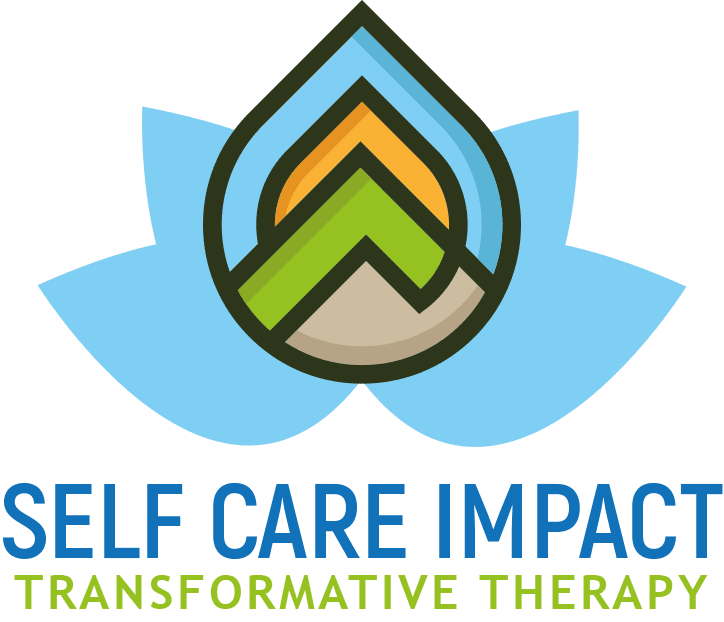EMDR therapy is a structured form of psychotherapy that helps individuals process and heal from traumatic experiences. It’s grounded in the understanding that the mind can heal from psychological trauma much as the body recovers from physical trauma. When a disturbing event occurs, it can get locked in the brain with the original picture, sounds, thoughts, feelings, and body sensations. EMDR therapy helps the brain process these memories and allows normal healing to resume.
A Common Misconception
A common misconception about EMDR therapy is that the core activities begin immediately during the first session. However, the initial appointment primarily involves our therapist conducting an intake of your history, initiating treatment planning, and laying the groundwork for your therapy. The direct engagement with traumatic memories and the distinctive eye movement exercises of EMDR typically commence only after these preliminary phases are completed, often not before the second or third session, and sometimes even later, depending on your specific circumstances and readiness.
The 8 Phases of Treatment
EMDR therapy is a structured approach that unfolds across eight distinct phases. While extensive information about these stages is available online for in-depth exploration, here’s a brief overview of each phase:
- History and Treatment Planning: This phase involves understanding the client’s past experiences and formulating a plan for the therapy.
- Preparation: Here, the therapist equips the client with tools and strategies for coping with emotional distress.
- Assessment: This stage is focused on identifying specific traumatic memories for treatment.
- Desensitization: The client is guided through processes to lessen the emotional impact of traumatic memories.
- Installation: The aim is to reinforce positive beliefs and attitudes in the client.
- Body Scan: The therapist and client work together to identify and address physical sensations associated with the trauma.
- Closure: This phase ensures that the client leaves each session feeling stable.
- Reevaluation: Progress is reviewed, and adjustments to the therapy plan are made as needed.
The duration of these phases varies, often spanning several weeks to months, and is tailored to each individual’s unique needs and progress.
Stirring up Old Emotions?
Undergoing EMDR therapy can often bring back emotions linked to past trauma, potentially heightening a client’s sensitivity during the initial phases of treatment until their symptoms gradually decrease. This is why therapists prioritize ensuring that clients possess robust coping mechanisms and access to supportive resources before embarking on the therapy. In preparation for EMDR, skilled clinicians dedicate time to evaluate existing coping strategies of the client and introduce new ones during the early stages of therapy. This approach aims to equip clients with effective tools to navigate the therapy process successfully, enhancing their overall outcomes with EMDR.
How to Prepare for your first EMDR Session
- Educate Yourself about EMDR: Understanding the process can reduce anxiety and help you set realistic expectations.
- Develop a Strong Support Network: Besides identifying people you can turn to, consider joining support groups where you can share your experiences and learn from others undergoing EMDR.
- Mindfulness and Relaxation Techniques: Practices like mindfulness meditation, progressive muscle relaxation, or guided imagery can help you manage stress and maintain focus during therapy sessions.
- Physical Health and Nutrition: Maintaining a balanced diet, regular exercise, and sufficient sleep can significantly impact your mental health and resilience.
- Journaling: Writing about your thoughts and feelings can be a therapeutic exercise in itself, providing an outlet for emotions and a record of your progress.
- Art and Creative Expression: Engaging in creative activities like drawing, painting, or writing poetry can offer a non-verbal outlet for expressing feelings and processing experiences.
Key Advantages of EMDR Therapy
Efficiency in Treatment:
EMDR is recognized as a brief form of psychotherapy, renowned for producing significant results in a relatively short time compared to longer-term therapies. Its structured approach, consisting of eight distinct stages and focused on solution-based outcomes, allows for a clear timeframe for treatment. While individual experiences with EMDR vary, numerous individuals report experiencing positive changes as early as within the first three sessions.
Reliable Outcomes:
EMDR therapy stands out statistically as one of the most evidence-backed therapeutic methods with consistent results. Research indicates that more than 80% of individuals with single-event trauma experience substantial relief from PTSD symptoms after just three EMDR sessions. Even those initially doubtful of EMDR’s efficacy often acknowledge its profound and transformative impact.
Facilitation of Natural Healing:
Similar to the body’s innate ability to heal physical injuries, our minds and emotional states naturally strive towards healing. EMDR therapy acts as a catalyst in this natural emotional healing process, potentially hastening what might otherwise be a prolonged journey. The desensitization and reprocessing stages of EMDR therapy specifically target emotional traumas, facilitating their transformation into a state of emotional resolution.
Maximizing Your EMDR Therapy Experience
Accepting Initial Anxiety
Feeling nervous about EMDR therapy is completely normal. The process can indeed bring up difficult and uncomfortable memories. But remember, EMDR doesn’t begin until you feel prepared. Your therapist will first provide you with various relaxation and coping techniques. These strategies are there to help you manage any emotional challenges and maintain your equilibrium throughout the therapy. You’ll have these tools, developed in collaboration with your therapist, to support you at every stage. So, while facing emotional discomfort is part of the journey, rest assured that you won’t be thrust into intense emotional experiences until both you and your therapist agree you’re ready.
Embracing Vulnerability and Building Trust:
The effectiveness of your EMDR therapy hinges significantly on your openness and willingness to be vulnerable with your therapist. The more promptly you can confront and share the deep-seated pains of your past, the more efficiently your therapist can assist in your healing process. Remember, you maintain complete control throughout your EMDR journey. You will never be compelled to engage in anything you’re uncomfortable with. Building trust with your therapist and openly sharing with them can expedite your healing. Keep in mind that EMDR is specifically designed to help you overcome past traumas, and your therapist is professionally trained to guide you through this healing path.
Connect with a Self Care Impact EMDR Therapist Now
It’s completely normal to feel anxious, especially before your first therapy session. It’s important to remember that your therapist is professionally trained to guide you through the process and provide you with effective grounding techniques before beginning any EMDR exercises. Numerous studies have demonstrated the efficacy of EMDR therapy in treating various mental health conditions, so you’re in capable hands. Initiating the journey to recovery from PTSD, trauma, depression, or anxiety is often the most challenging step. However, like many others who have pursued EMDR therapy, you’re likely to find it a transformative and rewarding experience. Taking that first step is crucial, and it could be the beginning of a significant change in your life.
To get started, you can email us, use the contact page, or call 720-551-4553 for a free, 15-minute phone consultation. You can also read more about EMDR on our Trauma Therapy services on our Trauma Web Page.
Self Care Impact Counseling envisions a new age of counseling for adolescents, adults, couples & groups that makes a REAL difference with core values of GROWTH | BALANCE | COMPASSION | INNER HARMONY..

